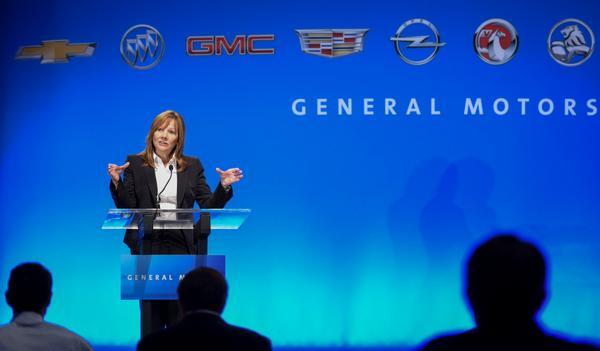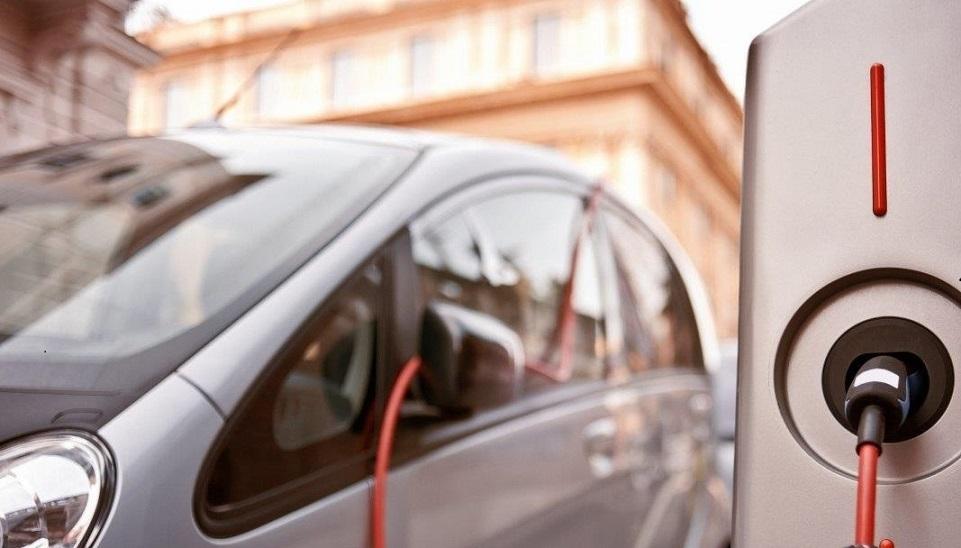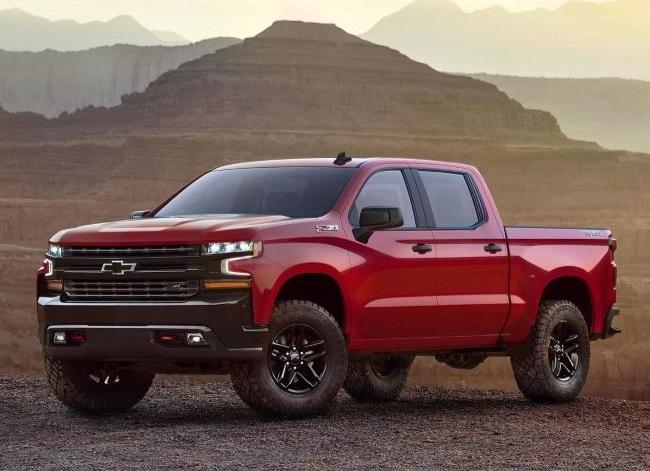Contributing editor
- FMA
- The Fabricator
- FABTECH
- Canadian Metalworking
Categories
- Additive Manufacturing
- Aluminum Welding
- Arc Welding
- Assembly and Joining
- Automation and Robotics
- Bending and Forming
- Consumables
- Cutting and Weld Prep
- Electric Vehicles
- En Español
- Finishing
- Hydroforming
- Laser Cutting
- Laser Welding
- Machining
- Manufacturing Software
- Materials Handling
- Metals/Materials
- Oxyfuel Cutting
- Plasma Cutting
- Power Tools
- Punching and Other Holemaking
- Roll Forming
- Safety
- Sawing
- Shearing
- Shop Management
- Testing and Measuring
- Tube and Pipe Fabrication
- Tube and Pipe Production
- Waterjet Cutting
Industry Directory
Webcasts
Podcasts
FAB 40
Advertise
Subscribe
Account Login
Search
Smart, large, and electric
GM's planned reinvention represents seismic shift for auto industry
- By Kate Bachman
- March 25, 2019

General Motors CEO Mary Barra stated that the production cuts and workforce reduction—about 6,000 factory workers and 8,000 salaried workers—were necessary to position the company for the future.
In 2008, as GM marked its century anniversary by filing Chapter 11 bankruptcy, Thomas Friedman’s Hot, Flat, and Crowded was published.
Friedman warned that global warming, globalization, and an exploding population growth are leading to a hot, flat, and crowded human condition. He contended that the U.S. could remedy climate change and the negative economic effects of globalization on it in the future by becoming a world leader in green technology.
With her announcement in November that GM is ceasing production of six passenger vehicles by the end of 2019, with the plants where they are being assembled “unassigned,” CEO Mary Barra stated that the production cuts and workforce reduction—about 6,000 factory workers and 8,000 salaried workers—were necessary to position the company for the future.
Zero Crashes, Zero Emissions, Zero Congestion
In a commitment statement on GM’s site entitled Transforming General Motors for the Future, Barra outlined zero emissions, zero congestion, and zero collisions as its vision for moving forward.
“The company that 110 years ago began revolutionizing how people get around now sees another unique opportunity to change the world. In a relatively short period of time, we have invested in autonomous vehicles, electrification, and vehicle connectivity. These technologies have the potential to save lives, help create a better planet, and save people a precious commodity: time.”
Emissions-free. Despite the Trump administration’s rollback of the 54.5 mpg fuel economy standards in denial of climate change, GM clearly recognizes it and is realigning its fleet because of it.
“It’s time for American Leadership in Zero Emission Vehicles,” the company’s website states. “We are calling for a National Zero Emission Vehicle program to move our country towards an all-electric, zero emissions future … and help reduce carbon emissions by 375 million tons over existing ZEV programs.
“In a market still dominated by engine-powered vehicles, General Motors is committed to an all-electric future.” The company says it plans to launch 20 all-electric vehicles by 2030.
Autonomous Vehicles
In its commitment statement, GM points to investments in its autonomous vehicles technology by global investor SoftBank and Honda.
“The team is repositioning a 110-year-old company from one of massive scale, industrial might, and market coverage into a nimble, technology-driven mobility company intent on reinventing personal transportation as we know it.”

GM, Toyota, Volkswagen, and nearly every automaker are realigning their fleets to include several electric vehicles.
Living Large
Consumer preference trends for large vehicles--SUVs and trucks--are the driving force for the discontinuation of the six passenger vehicle models. Reduced demand for sedans resulted in production cuts at GM’s Lordstown, Ohio, plant by more than half in 2018 from its production in 2016.
Ironically, 2008 critics faulted GM for sticking with large gas-guzzler vehicles in the face of high gas prices while foreign automakers’ sales surged on their fuel-efficient cars.
Even more ironically, increasingly fuel efficient vehicles and impending electrification have cut the demand for gasoline and contributed to its glut, thereby rendering large vehicles less expensive to fuel.
End of …?
A 2008 Reuters editorial characterized GM’s bankruptcy as “The end of GM as we knew it.”GM’s commitment statement touts “General Motors has re-engineered itself and is entering 2019 as a stronger company.” Barra is undoubtedly determined that although 2019 may be the end of GM’s fleet as we have known it, it will not be the end of GM.
subscribe now

The Fabricator is North America's leading magazine for the metal forming and fabricating industry. The magazine delivers the news, technical articles, and case histories that enable fabricators to do their jobs more efficiently. The Fabricator has served the industry since 1970.
start your free subscriptionAbout the Author

Kate Bachman
815-381-1302
Kate Bachman is a contributing editor for The FABRICATOR editor. Bachman has more than 20 years of experience as a writer and editor in the manufacturing and other industries.
- Stay connected from anywhere

Easily access valuable industry resources now with full access to the digital edition of The Fabricator.

Easily access valuable industry resources now with full access to the digital edition of The Welder.

Easily access valuable industry resources now with full access to the digital edition of The Tube and Pipe Journal.
- Podcasting
- Podcast:
- The Fabricator Podcast
- Published:
- 04/30/2024
- Running Time:
- 53:00
Seth Feldman of Iowa-based Wertzbaugher Services joins The Fabricator Podcast to offer his take as a Gen Zer...
- Industry Events
Pipe and Tube Conference
- May 21 - 22, 2024
- Omaha, NE
World-Class Roll Forming Workshop
- June 5 - 6, 2024
- Louisville, KY
Advanced Laser Application Workshop
- June 25 - 27, 2024
- Novi, MI
Precision Press Brake Certificate Course
- July 31 - August 1, 2024
- Elgin,
































